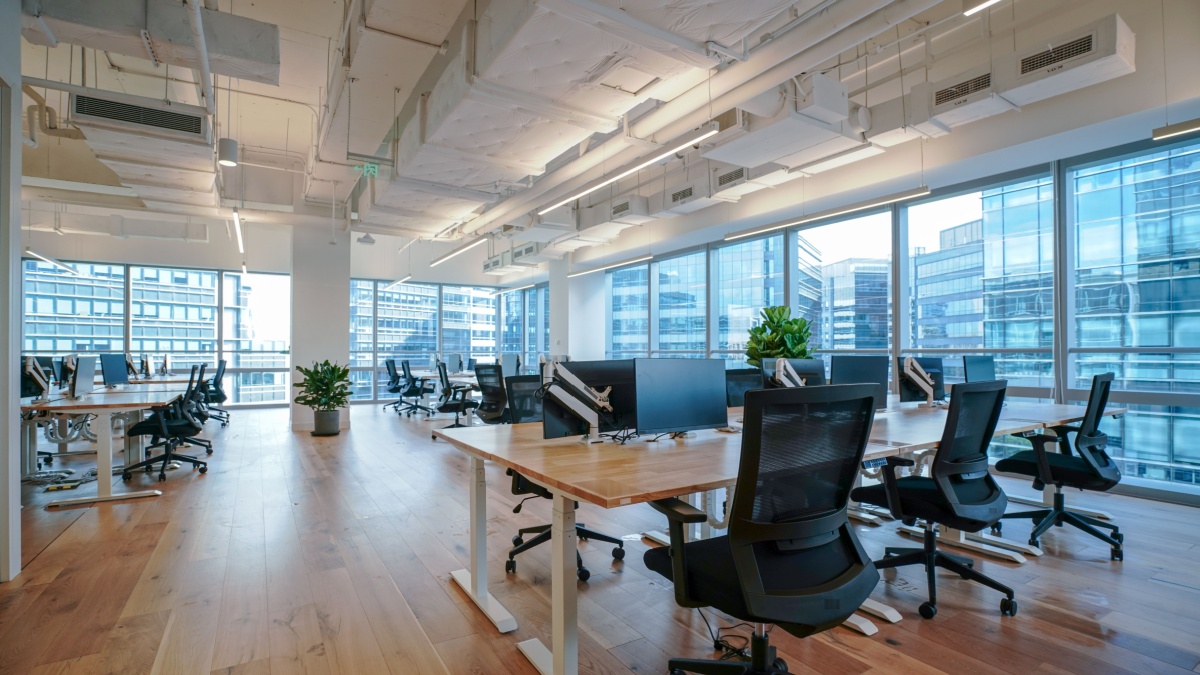
When starting a new business, elements like office design are unlikely to be at the top of your priority list. But when you’re ready to expand and move into a commercial workspace, it’s crucial to consider how your interior design might affect employees’ morale, productivity, and overall well-being.
From lighting to plants, even the smallest aspects of office design are more important than you might realise.
In this post, the UK’s top-rated company formation agent, Quality Company Formations, explores why business owners should prioritise office design and how they can make meaningful improvements on even the smallest budgets.
Office design impacts well-being
The look and feel of an office can significantly influence mental health, motivation, and physical comfort. Whether your team is in the office every day or a couple of times a week, their workspace should help them feel their best and do their best work.
For example, a poorly lit, cramped office can contribute to stress and fatigue, leaving employees unmotivated and uninspired. Over the long term, this can lead to absenteeism.
Key office design features
Whether your current office needs a revamp or you’re just moving into a new space, there are some specific design elements that will help build a stronger, healthier workplace culture.
1. Natural light
Lighting may be the most underrated part of office design. Studies consistently show that natural light boosts mood, energy levels, and concentration, and improves sleep quality.
Meanwhile, harsh artificial lighting, such as fluorescent bulbs, have been linked to headaches and eye strain. Poor lighting can prevent people from carrying out their daily roles, and it’s a genuine health hazard.
If your office has windows, keep them unobstructed, and use light-coloured blinds to diffuse sunlight without blocking it. If natural light is limited, use mirrors to reflect light and brighten darker corners. Also, opt for full-spectrum LED bulbs, which give a much better impression of daylight than standard office lighting.
2. Plants
Plants reduce stress, improve air quality, and even increase productivity by up to 15%. In addition, they’re an excellent and inexpensive way to add colour to a monochrome workspace, a small detail that makes an office feel more pleasant and welcoming.
Business owners on a tight budget can opt for low-maintenance plants like snake plants, succulents, or pothos. They don’t cost much, purify the air, and are virtually invincible.
3. Ergonomics and comfort
Comfort is paramount in an office setting. Poor furniture choices can lead to repetitive strain injuries, back pain, and other long-term physical health conditions.
You can easily prevent these problems by making mindful choices when furnishing your office. Ergonomic chairs, spacious desks, and adjustable screens are the basics to creating a safe and comfortable workspace. You could also consider laptop stands, footrests, and keyboard wrist rests for anyone needing additional support.
4. Breakout spaces
Creating designated areas for relaxing or brainstorming can encourage collaboration and relieve pressure, especially in creative or strategic businesses.
Even if space is limited, a comfortable armchair in the corner or a standing table in the kitchen can serve as an ad-hoc breakout space, allowing employees to recharge away from their desks, enjoy a change of scenery, and bond with their colleagues.
5. Colour psychology
Colours can subtly affect how we feel. For example, blue promotes calm and concentration, green is refreshing, and yellow inspires creativity. Adding the right colours to your office is a simple yet effective way to encourage specific moods and atmospheres in the workplace.
You don’t need to paint the entire office. Simply incorporate colour through smaller elements like artwork, accessories, furniture, and even stationery. Think about the feeling you want your office to convey and use colour to reinforce that mood.
6. Private spaces
Modern offices tend to have an open-plan design, promoting a collaborative and unified culture. However, this set-up can also create noise and interruptions, thus reducing concentration.
Sometimes, employees simply need a quiet space to work, make a sensitive phone call, or have a private conversation. Providing dedicated private spaces in the office can significantly improve overall well-being and support mental focus.
Office design on a budget
Small businesses and startups should note that you don’t need a massive refurbishment to create a workspace that encourages well-being. Here are a few simple and affordable ways to get started:
- Declutter regularly – A tidy office reduces stress and improves focus.
- Encourage personalisation – Allowing staff to decorate their desks (without cluttering them) helps them feel more connected to the space.
- Use vertical space – Shelves and wall organisers can free up desks and create a more breathable environment. It’s also an efficient way to make the most of a small office.
- Choose second-hand furniture: Furniture and fittings don’t have to be new. Quality second-hand items are often just as effective, whilst promoting sustainability.
Design your office with purpose
Office design is about creating a comfortable, motivating, and healthy space where people are empowered to do their best. Basic features like natural light, choosing the right colours, and providing ergonomic equipment are an excellent way to build a productive and happy workforce.
If you’re considering starting a business, Quality Company Formations are there to help you lay the foundation for success and support you every step of the way. Visit their website for a quick and simple company registration process, a wide selection of address and secretarial services, and a comprehensive business resource centre.
